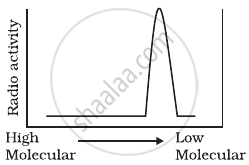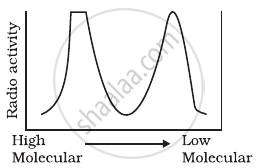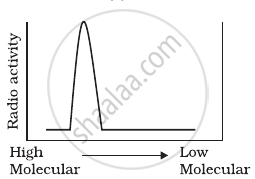Advertisements
Advertisements
प्रश्न
Replication was allowed to take place in the presence of radioactive deoxynucleotides precursors in E.coli that was a mutant for DNA ligase. Newly synthesised radioactive DNA was purified and strands were separated by denaturation. These were centrifuged using density gradient centrifugation. Which of the following would be a correct result?
पर्याय
उत्तर

Explanation:
Let us assume that heavier nitrogen was used in this experiment. This nitrogen molecule from parent's cell would be transmitted equally in the daughter cells. Each daughter cell will have half of the DNA with heavier nitrogen and another half with lighter nitrogen.
In the F2 generation, 50% of daughter cells will have a combination of radioactive and non-radioactive DNAs. The rest 50% of daughter cells will have non-radioactive DNAs.
This is the reason why the graph shows two peaks with each peak representing a particular form of nitrogen in DNA.
APPEARS IN
संबंधित प्रश्न
Transfer of genetic material into a bacterial cell through a viral vector is known as ______.
Multiple Choice Question:
Griffith worked on ____________.
A template strand of DNA has the base sequence CATGATTAC. New strand synthesized on it will be:
Explain the Griffith’s experiment in detail with diagram.
Who among the following discovered transformation?
Which one of the following is NOT a genetic material in bacteriophage?
To prove that DNA is the genetic material, which radioactive isotopes were used by Hershey and Chase (1952) in experiments?
RNA is the genetic material in ______.
You are repeating the Hershey-Chase experiment and are provided with two isotopes: 32P and 15N (in place of 35S in the original experiment). How do you expect your results to be different?
Out of 64 codons only 61 code for the 20 different amino acids. This is known as ______ of genetic code.



